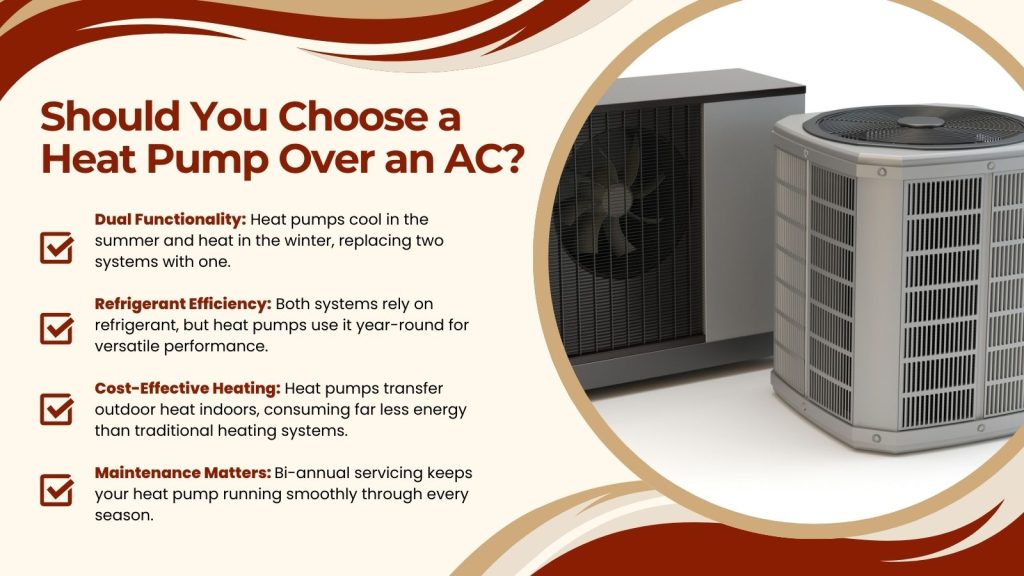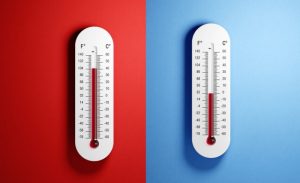You probably know a lot of folks who, in the last several years, have replaced their old air conditioners not with new air conditioners, but with an upgrade to a heat pump. And chances are, they’ve been really happy about it. But what exactly is a heat pump? Is it just a fancy air conditioner? What else can it do? What’s so great about it? Let’s get into the details about why heat pumps in Akron, OH are a great option. Reach out to us to discuss how we can get you set up with a new HVAC system and installation for as little as $102/month.

AC Technology
The first thing it’s helpful to know is the basic principle of AC technology. A central air conditioner has two units—one indoors and one out—and a system of coils that run between them. The coils are thin metal tubes that have refrigerant flowing through them.
The outdoor unit is where the compressor lives. That’s the component that puts the refrigerant under pressure so it will keep moving. The indoor unit is where the blower fan lives. Once the air conditioner cools down the air, the blower fan pushes it through the ductwork. But how does the refrigerant cool the air?
The key here is evaporation and condensation. Refrigerant is a chemical that absorbs and releases heat very easily, and changes states of matter in the process. As it takes in the heat from the house, it evaporates into a gas. As it lets the heat go, outdoors, it condenses into a liquid. Now much cooler, it flows back into the house, and the cycle goes on.
The Heat Pump Difference
Everything we’ve explained about air conditioners is also true about heat pumps. Pressurized refrigerant flows between indoor and outdoor units, absorbing and releasing heat. But a heat pump can work in the opposite direction, as well! There’s a component—the reversing valve—which controls which way the refrigerant flows through the coils.
Flowing in one direction, the refrigerant absorbs indoor heat to release outside, like an air conditioner. When it’s switched to flow in the other direction, it absorbs outdoor heat to release inside! Much, and in some cases all, of the heat a home needs can be provided this way. And it is remarkably efficient!
Heating Efficiency
Generating heat is costly, both in terms of energy use and in terms of your financial bottom line. How does a heat pump do it with so much less energy? The trick is that it doesn’t do it at all! No, instead of generating heat, the heat pump simply transfers it from place to place! Much, much less energy is required for this job.
It might seem impossible to transfer heat to the indoors when it’s chilly out. However, a heat pump continues to be effective and efficient even at surprisingly low temperatures. The refrigerant is kind of like antifreeze. It can be extremely cold without becoming a solid. And the outdoor air doesn’t need to be warm—just warmer than the icy refrigerant—for heat to be transferred.
Maintenance and Repair
Just like an air conditioner, a heat pump requires maintenance. Because it works all year long instead of just in the summer, that maintenance should be performed twice a year. And just like an air conditioner, a heat pump will occasionally need repair. Most of the things that can go wrong are exactly the same as the things that can happen to an air conditioner, with the exception that the reversing valve could become stuck and need repair.
Contact Crown Group Ohio today with any questions or to make an appointment.

